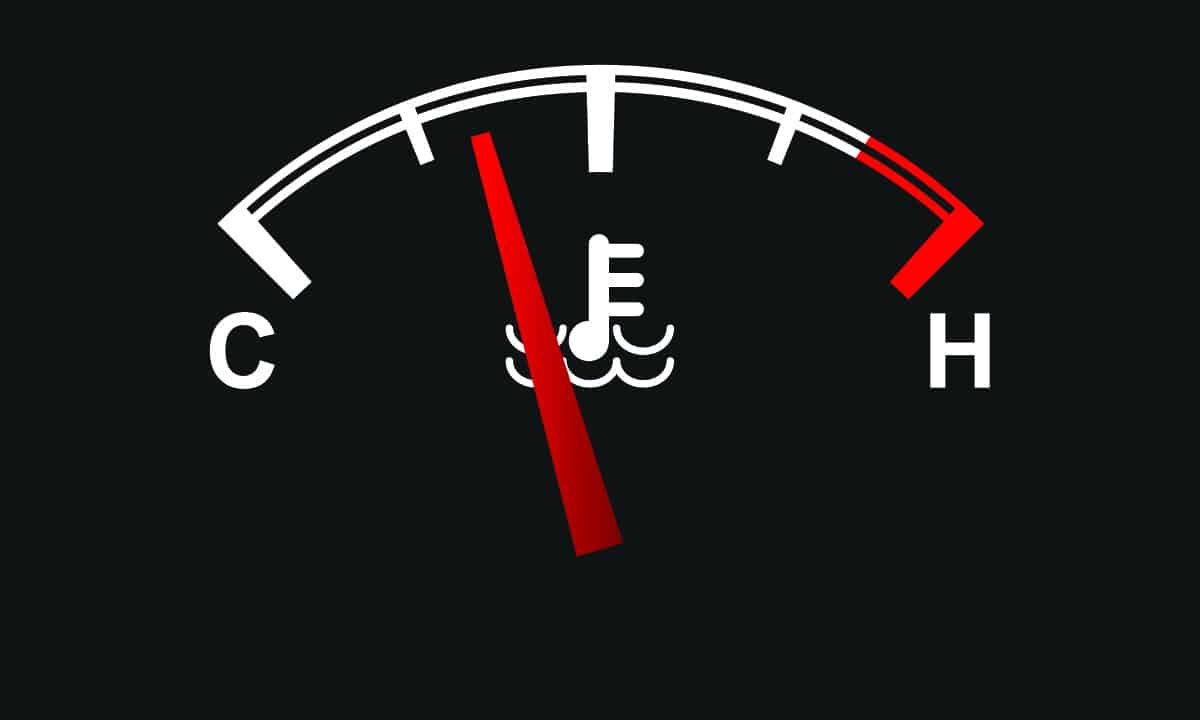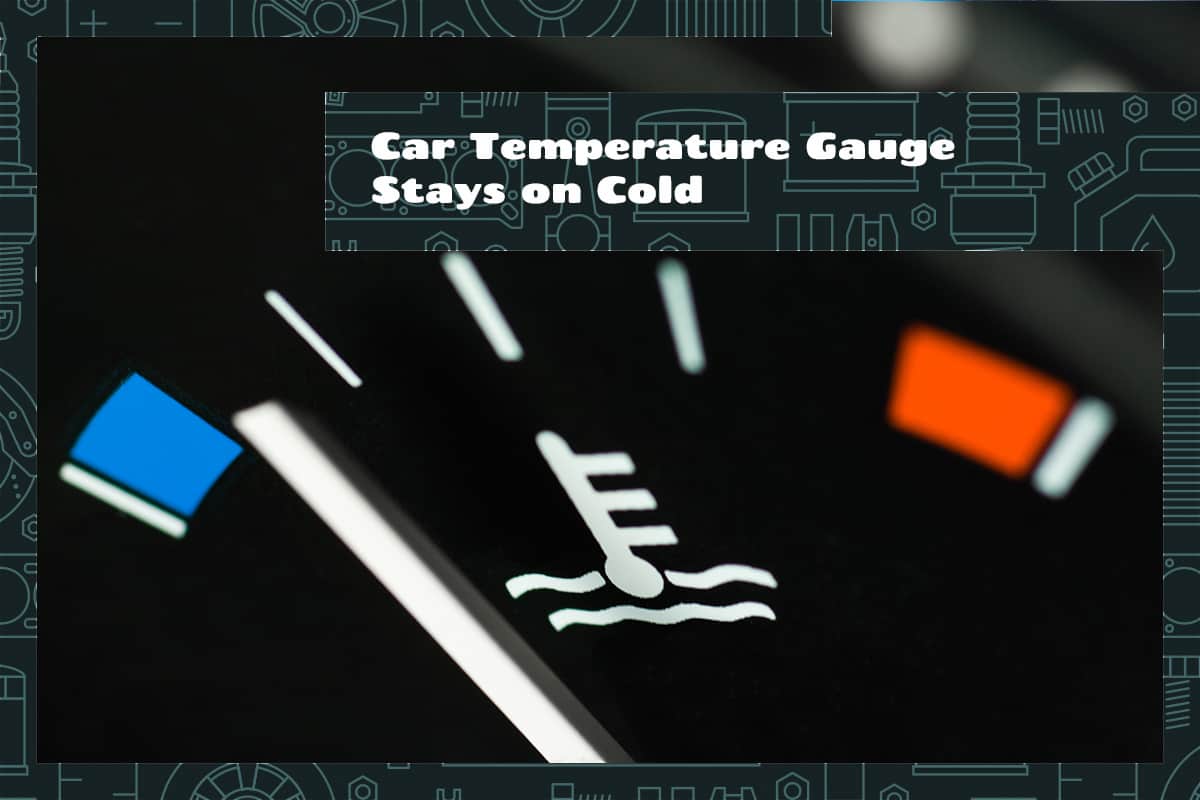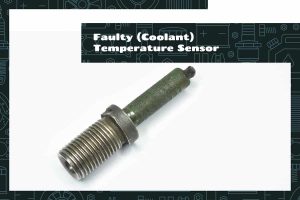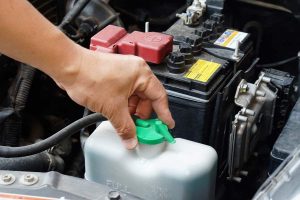In the world of automobiles, understanding the workings of your car can be critical to maintaining its performance and ensuring a safe drive. A key instrument in this process is the car temperature gauge. It serves as the window to your car’s temperature health, helping you to monitor if the engine is running too hot or too cold.
Potential causes for your car’s temperature gauge staying on cold could include the following:
- A faulty thermostat that remains stuck open
- A malfunctioning temperature sensor
- Electrical issues affecting the gauge’s operation
This guide will take you through these issues and more. It offers an in-depth examination of the car temperature gauge, its implications on your vehicle’s health, and how to rectify the situation.
The Mechanics of the Car Temperature Gauge

The car temperature gauge, located on your dashboard, keeps you informed about your vehicle’s engine temperature. Understanding its operation helps you diagnose any potential issues early and prevent severe damage to the engine.
The Anatomy of a Car Temperature Gauge
At its core, a car temperature gauge consists of three main components: a temperature sensor, a thermostat, and the gauge itself.
The temperature sensor, also known as a coolant temperature sensor, is typically located near the thermostat housing. It’s responsible for reading the engine coolant’s temperature. The thermostat is a valve situated in the coolant system that regulates the flow of coolant based on its temperature. The gauge is the visible component on your dashboard, translating the temperature information into an easily readable format for you.
How a Car Temperature Gauge Works
In most cars, the temperature gauge operates using a variable resistor within the temperature sensor. When the engine is cold, the resistance is high, which indicates a low temperature to the gauge. As the engine warms, the resistance decreases, signaling a temperature increase to the gauge.
The thermostat plays a crucial role in this process. When the engine is cold, the thermostat remains closed, allowing the engine to warm up quickly as the coolant circulates within the engine only. As the engine temperature rises, the thermostat opens to allow coolant to flow to the radiator, where it dissipates heat before returning to the engine. This regulated circulation maintains the engine within its optimal operating temperature.
The Normal Operating Range of a Car Temperature Gauge
The normal operating range of a car temperature gauge usually sits at the midpoint of the gauge, typically between 195 and 225°F (88 to 107°C). When the engine is first started, it’s normal for the gauge to register on the lower end or “cold” section until the engine warms up.
If your car’s temperature gauge consistently remains in the “cold” zone even after driving for a while, there could be a problem. It may indicate a faulty thermostat that’s stuck open, a malfunctioning temperature sensor, or electrical issues affecting the gauge. Ignoring these issues may lead to reduced engine performance or severe damage over time.
Identifying and Understanding the Issue
A consistent cold reading on your car’s temperature gauge is not as harmless as it might initially seem. To efficiently address this issue, it’s essential to identify the signs and understand the underlying causes.
Signs Your Car Temperature Gauge Stays on Cold
Your car’s temperature gauge provides a visual indication of the engine’s temperature. Under normal conditions, it moves from the ‘cold’ to the ‘normal’ range as the engine warms up. If the gauge stays in the ‘cold’ zone consistently, even after significant driving, this is a telltale sign of a potential problem.
Some other signs might accompany this issue:
- The heater might blow only cold air, as the engine isn’t reaching the temperature necessary to produce warm air.
- You might notice a decrease in fuel efficiency because a cold engine uses more fuel.
Potential Causes of a Cold-Reading Temperature Gauge
Once you’ve identified the issue, it’s time to understand what might be causing it. Here are the common causes:
- Faulty Thermostat: The most common cause is a faulty thermostat, specifically one that’s stuck open. Normally, the thermostat should close when the engine is cold and open when it’s hot. If it’s stuck open, the coolant is continuously cycled to the radiator, preventing the engine from reaching its optimal temperature.
- Malfunctioning Temperature Sensor: The temperature sensor could be faulty, sending incorrect readings to the temperature gauge. Instead of an engine problem, the issue might lie solely with the sensor itself.
- Electrical Issues: If both the thermostat and sensor are functioning properly, the problem might be electrical. A loose connector, a blown fuse, or a bad wire could be preventing the correct temperature signal from reaching the gauge.
How Serious is a Car Temperature Gauge Staying on Cold?
While an overheating engine is an immediate red flag to any driver, an engine that doesn’t seem to warm up might seem less concerning. However, a car temperature gauge that consistently stays on cold is an issue that shouldn’t be ignored.
Impacts on Car Performance
One of the most noticeable impacts is on fuel efficiency. A cold engine requires more fuel to operate, leading to increased fuel consumption. This condition can lead to higher expenses for you in the long run.
Moreover, a cold engine may affect the efficiency of your car’s heating system. You might find that your heater only blows cold air, making for uncomfortable rides in cold weather.
Impacts on Car Longevity
Consistently running cold can have serious consequences for your car’s longevity. When the engine is cold, it’s not at its optimal operating condition. This condition can cause increased wear and tear on engine components, ultimately shortening the engine’s lifespan.
A cold engine causes more incomplete combustion of fuel, leading to carbon buildup in the engine. This carbon buildup can cause various issues, including reduced engine performance and potential damage to the engine.
Fixing the Issue

If your car’s temperature gauge constantly reads cold, the next step is to fix the issue. Although some solutions may require professional assistance, there are some you can handle yourself if you’re comfortable doing so.
How to Replace a Faulty Thermostat
A faulty thermostat is often the culprit when the temperature gauge reads cold. Here’s a step-by-step guide to replace it:
- Purchase the correct thermostat for your vehicle model. You can find this information in your vehicle’s manual or by consulting with a trusted auto parts store.
- Allow the engine to cool, then locate the thermostat housing. This is typically near the engine, at the end of the hose that leads from the radiator.
- Remove the radiator cap and drain the coolant to a level below the thermostat housing to avoid spilling.
- Remove the thermostat housing. Take note of how the thermostat is fitted.
- Remove the faulty thermostat and replace it with the new one. Make sure it’s positioned the same way as the old one.
- Reattach the thermostat housing and refill the radiator with coolant.
- Run the engine and check for leaks. Also, monitor the temperature gauge to see if the issue is resolved.
Replacing a Malfunctioning Temperature Sensor
If your temperature sensor is faulty, it may send incorrect readings to the gauge. Here’s how to replace it:
- Locate the sensor. It’s usually near the thermostat housing.
- Disconnect the electrical connector from the sensor.
- Unscrew the old sensor using a wrench or deep socket.
- Screw in the new sensor and tighten it. Avoid over-tightening as it can damage the sensor.
- Reconnect the electrical connector.
- Run the engine and monitor the temperature gauge for correct readings.
Addressing Electrical Issues
Electrical problems can be complex to diagnose and fix. If you suspect an electrical issue, it’s best to seek help from a professional mechanic. However, some basic troubleshooting steps include:
- Check for loose connections. Ensure the electrical connector at the temperature sensor is securely connected.
- Inspect for wire damage. Look for any visible signs of fraying or burning.
- Check the fuse. If the temperature gauge fuse is blown, replace it with a new one of the same rating.
- If the problem persists, consult a professional.







